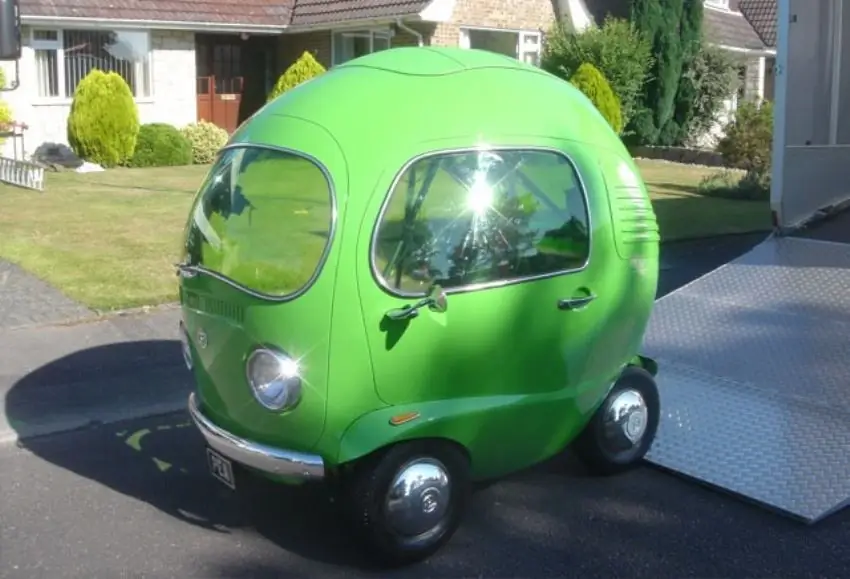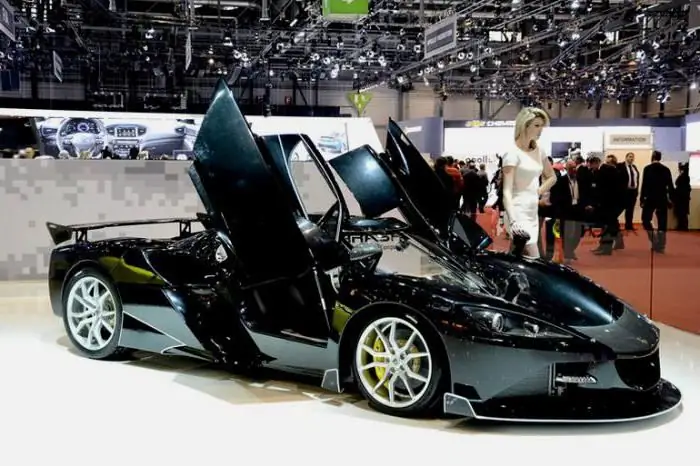2025 Author: Erin Ralphs | [email protected]. Last modified: 2025-01-22 21:14:09
Now on the roads of our native country you can find a huge variety of cars. The bulk - of course, beautiful and new foreign cars. But there are also representatives of the Soviet automobile industry. Our review is dedicated to these old, long-standing retro cars. So, cars of the USSR, photos and descriptions of cars.
Governmental ZIL-111
The main slogan of the domestic industry of the 60s in general and the automotive industry in particular was the slogan "Overtake America in everything."The first secretary of the Communist Party N. S. president. In addition, the "Stalin" government car ZIS-110 was already pretty outdated and did not meet the spirit of the era. As a result of the aspirations of Nikita Sergeevich and the entire party elite, a new representative ZIL-111 machine appeared in 1959.
Like many cars in Russia and the USSR, the ZIL-111 was very similar to the American model Cadillac. All the best that the Soviet auto industry could do was embodied in this car: power steering, automatic transmission,electronic windows and a spacious stylish interior. The representative Soviet car withstood many modifications and enjoyed well-deserved popularity among officials.

GAZ-13 Chaika
It should be noted that the cars of the USSR were not particularly attractive. But the "Seagull" … Of course, this is the most stylish and beautiful representative car of the Union. It has already been noted earlier: the cars of Russia and the USSR are very similar in their design and technical solutions to the products of the Western automotive industry. GAZ-13 is made in the so-called fin style ("Detroit baroque"). The car began to be produced in 1959, and production did not stop for more than 30 years. "The Seagull" was rightfully called the long-liver of the domestic auto industry.
As for the technical performance of the car, they were on top. A powerful engine with a volume of 5.5 liters made it possible to disperse a “hundred” in 20 seconds. The speed ceiling for the Chaika was 160 km/h.
Getting the "Seagull" was not so easy. Especially in the first years of production, ministers, first secretaries of the party, and diplomats “hunted” for the car. Therefore, the GAZ-13 was inaccessible to ordinary Soviet citizens for a long time. Only at the end of the 70s did cars begin to be used in Soviet institutions such as registry offices and executive committees.

ZAZ 965-968 "Zaporozhets"
In the post-war period, the dream of the so-called "nationwide car" lived in Soviet society. And she really was destined to come true. In the endOn November 1960, the legendary Zaporozhets rolled off the ZAZ assembly line. The car was released according to the plans of the government. It was decided to use the Italian Fiat 600 as a model of the future car. But it should be noted that the car did not become a copy of the sample, and in some aspects even surpassed it, having received nationwide recognition for its compactness, comparative reliability and, most importantly, low price (about 3,000 Soviet rubles).
The technical characteristics of the car were quite worthy and modern for those times. The car could accelerate to 90 km / h and overcome significant obstacles on the road. It should be noted that there were several generations of "Zaporozhets". The earlier ones received the comic nickname “humpback” for the shape of their body, it was inherited by later models of cars made in the USSR - ZAZ-966 and ZAZ-968.

GAZ-24 Volga
The black and white 24th Volga became a famous symbol of the Soviet era. The car was produced for 32 years (1970-1992). "Volga" for every Soviet person was associated with prosperity and prosperity, and therefore was a cherished dream. The car went on mass sale immediately after the release, but it was very difficult to buy it. Most of the models were distributed to government agencies or exported. In addition, the Volga was very expensive compared to the Moskvich or Zaporozhets. The car has undergone many modifications, but the sedan has always been the most popular and stylish option.
GAZ-24 was very well equipped technically. The package "Volga" included: power steering, four-speed gearbox, two-chamber carburetor, curved glass. Under the hood of the car was a very powerful engine (95 horsepower) with a volume of 2.4 liters.
The car was just perfect for that time. The comfort, reliability and unpretentiousness of the Volga made it truly a symbol of the Soviet Union.

VAZ-2101 - "Penny"
So, another legend. USSR cars were different, but this is perhaps the most popular. Again, the Fiat 124 was taken as the prototype of the Kopeika. True, the Italian car was a little more perfect. In 1970, the first Zhiguli model came off the assembly line of the Volga Automobile Plant, which immediately gained recognition and popularity. The car was revolutionary for its time. High-quality assembly and design solutions were well combined with an affordable price. The VAZ-2101 was popular far beyond the borders of the USSR, in Cambodia, Cuba, and in many other third world countries, it is still being driven to this day.
A curious fact. As a result of a survey conducted by the Russian automotive magazine Za Rulem, the VAZ-2101 Kopeika was recognized as the best domestic car of the century.

VAZ-2121 Niva
The leaders of the Soviet automobile industry in the mid-70s were talking about an all-wheel drive car, since USSR trucks could not perform all the functions assigned to them. The head of the Council of Ministers A. Kosygin himselfset such a task for the VAZ plant, with which the developers coped with more than "excellent". In 1977, the excellent Soviet car VAZ-2121 Niva was released. It was the world's first small SUV. The assembly of the machine is characterized by high quality, and design solutions for permanent all-wheel drive have significantly reduced the load on the transmission. Niva received recognition abroad, broke a number of world records and enjoys well-deserved popularity to this day.

Cars of the USSR and modernity
Models of cars of the USSR are very diverse. Many of them can be put on a par with foreign cars. To date, there are modernized cars of the USSR. You can see photos of some of them both in the article and in other sources. Moreover, many of them were made according to the model of the first model. In Russia and in the world, products of the Soviet automobile industry are still used, both as retro solutions and simply in the everyday sense. The modernized factories of the USSR today produce a huge number of modern cars. A striking example is AvtoVAZ, which is based on the foundation of the Soviet Volga Automobile Plant. Speaking about the cars of the Soviet Union, we should talk about quality, reliability and style.
Recommended:
The ugliest cars in the modern world: descriptions and photos of ugly models

First of all, when choosing a car for daily trips, the driver cares about its presentable appearance. However, over the long years of the history of the automotive industry, designers have created many samples of vehicles with a repulsive appearance
How VAZ, GAZ and other cars of the USSR stand for. Full list

We all know that in the Soviet Union there was a developed automotive industry that produced many types of automotive equipment under different brands. At present, it is rare to find this product of the USSR anywhere. In this article, we will not limit ourselves to answering the question of how VAZ and GAZ are deciphered, but we will also talk about them
The most powerful SUV: rating, review of the best models, specifications, comparison of power, brands and photos of cars

The most powerful SUV: rating, features, photos, comparative characteristics, manufacturers. The most powerful SUVs in the world: an overview of the best models, technical parameters. What is the most powerful Chinese SUV?
English cars: brands and emblems. English cars: rating, list, features and reviews

Cars made in the UK are well known around the world for their prestige and high quality. Everyone knows such companies as Aston Martin, Bentley Motors, Rolls Royce, Land Rover, Jaguar. And these are just a few famous brands. The UK automotive industry is at a decent level. And it is worth at least briefly talking about those English models that are included in the ranking of the best
Crawler tractors of the USSR. History of tractors in the USSR

In the USSR, close attention was paid to tractor construction. Agriculture needed speedy mechanization, and there were no own factories in the country. Realizing the need to increase labor productivity in the countryside, V. I. Lenin in 1920 signed the corresponding decree "On a single tractor farm." Already in 1922, small-scale production of domestic models "Kolomenets" and "Zaporozhets" began

